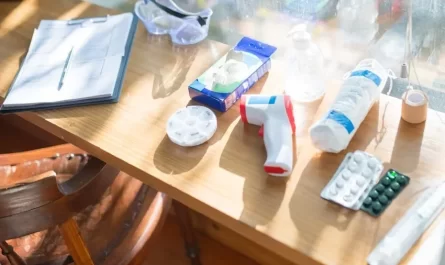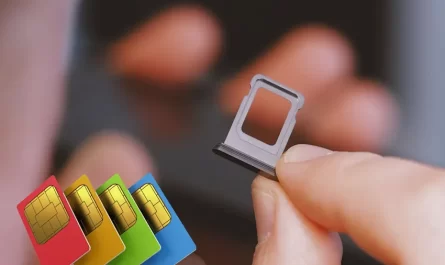Airport Security: The Lowdown on Tampons and Menstrual Products
Contents
- 1 Can TSA See If You Have a Tampon?
- 2 Bringing a Box of Tampons Through TSA
- 3 Do Menstrual Products Set Off TSA Scanners?
- 4 Visibility of Menstrual Cups on Airport Scanners
- 5 Period Pads and Airport Security
- 6 Why Does My Groin Get Flagged at TSA?
- 7 TSA’s Policy on Physical Touch During Screening
- 8 Can Airport Security Touch Your Groin?
- 9 Why Does TSA Tell You to Pull Your Pants Up?
Experiencing a pat-down at airport security while using menstrual products is a situation many travelers have faced. Surprisingly, TSA body scanners can sometimes misinterpret these products as potential security concerns, leading to additional screening procedures. Despite this, there’s a noticeable lack of information available regarding this issue.
The TSA’s official website provides detailed guidance on a range of items from clothing to medical devices and even breast milk. However, it notably lacks any mention of menstrual products and their potential to trigger alarms during the screening process. This oversight leaves many travelers unprepared for the possibility that their period products could cause a security alert.
Consequently, individuals using menstrual products might find themselves unexpectedly subject to further scrutiny. Although these secondary checks are generally quick, there have been instances where the extent of the searches has led to public outcry and legal action.
Traveling can be stressful, and for those who menstruate, questions about how menstrual products are treated by airport security scanners—like whether tampons or menstrual cups will flag security alerts—add an extra layer of concern. Let’s address these questions and clarify what you can expect when passing through airport security with menstrual products.
Can TSA See If You Have a Tampon?
The Transportation Security Administration (TSA) employs Advanced Imaging Technology (AIT) in their security screenings to detect objects on individuals. These machines aim to spot potential threats rather than intimate items, such as tampons, sanitary napkins or pads, panty liners, and super-absorbent tampons.
Despite this, there have been occasions where individuals with menstrual products have faced additional checks. While these follow-up inspections tend to be brief, some have sparked significant public backlash and even lawsuits, catching many travelers off guard with the realization that menstrual products could trigger an alarm.
TSA personnel are specifically trained to identify security threats, meaning items like tampons and leolines, whether worn or packed, typically aren’t flagged as concerns.
Bringing a Box of Tampons Through TSA
Yes, you can bring a box of tampons in your carry-on luggage. Tampons are considered personal hygiene items and are allowed through TSA checkpoints without any restrictions.
Do Menstrual Products Set Off TSA Scanners?
Typically, menstrual products such as tampons and pads do not trigger TSA scanners, which are designed to detect materials representing a security risk—a category into which ordinary menstrual products do not fall. However, there have been instances where sanitary products have unexpectedly activated TSA scanners, a fact that is seldom acknowledged openly.
Visibility of Menstrual Cups on Airport Scanners
The verdict is still pending, but according to TSA, menstrual cups, due to their small size and silicone composition, are not expected to be clearly visible on airport scanners. Similar to tampons and pads, they are not deemed items of concern by TSA.
Period Pads and Airport Security
Period pads are also permitted through airport security. Like tampons, they’re considered necessary personal hygiene items and are not restricted by TSA regulations.
Why Does My Groin Get Flagged at TSA?
If your groin area is flagged by TSA, it could be due to a variety of reasons unrelated to menstrual products, such as loose clothing, a forgotten item in your pocket, or even random selection for additional screening.
TSA’s Policy on Physical Touch During Screening
TSA agents are trained to conduct pat-downs with respect to individuals’ privacy and dignity. Agents are instructed to use the back of their hands for sensitive areas and to conduct screenings in the presence of a witness when a pat-down is necessary. They are not allowed to touch private parts directly.
Can Airport Security Touch Your Groin?
During a pat-down, TSA agents may need to check the groin area, especially if the scanner indicates a need for further inspection. However, this is done professionally and respectfully, following strict guidelines to respect passengers’ privacy.
Why Does TSA Tell You to Pull Your Pants Up?
TSA may ask you to adjust your clothing, such as pulling up your pants, to ensure a clear and unobstructed view during the screening process. This helps minimize false alarms and speeds up the screening process for everyone.
Understanding how airport security handles menstrual products can alleviate some stress of traveling while menstruating. The TSA’s primary focus is on identifying potential security threats, not personal hygiene products. Whether you’re carrying tampons, pads, or menstrual cups, these items should not cause any significant issues during your security screening. Always remember, TSA agents are there to ensure the safety of all travelers, and their procedures are designed with respect and privacy in mind.
The TSA can flag your menstrual products
Baggage RulesCan I have a carryon and a backpack and a purse?
Can I carry nail clippers on a plane?
What makeup items are not allowed on planes?
Are shaving razors allowed on plane?
Can you take shampoo and deodorant on a plane?
Clothes That Could Land You in Trouble at the Airport
Can you knit or crochet on an airplane?
Does Airport Security Flag Tampons?
The TSA 3-1-1 Rule: Airplane Liquid Limits & Restrictions
Airport Security and Vibrators
What makeup does TSA consider liquid?
Flying with Musical Instruments
Are children’s toy guns allowed on a flight?
Can I Trust My Bathroom Scale for Weighing Luggage
Do I have to take out my piercings for airport security?




